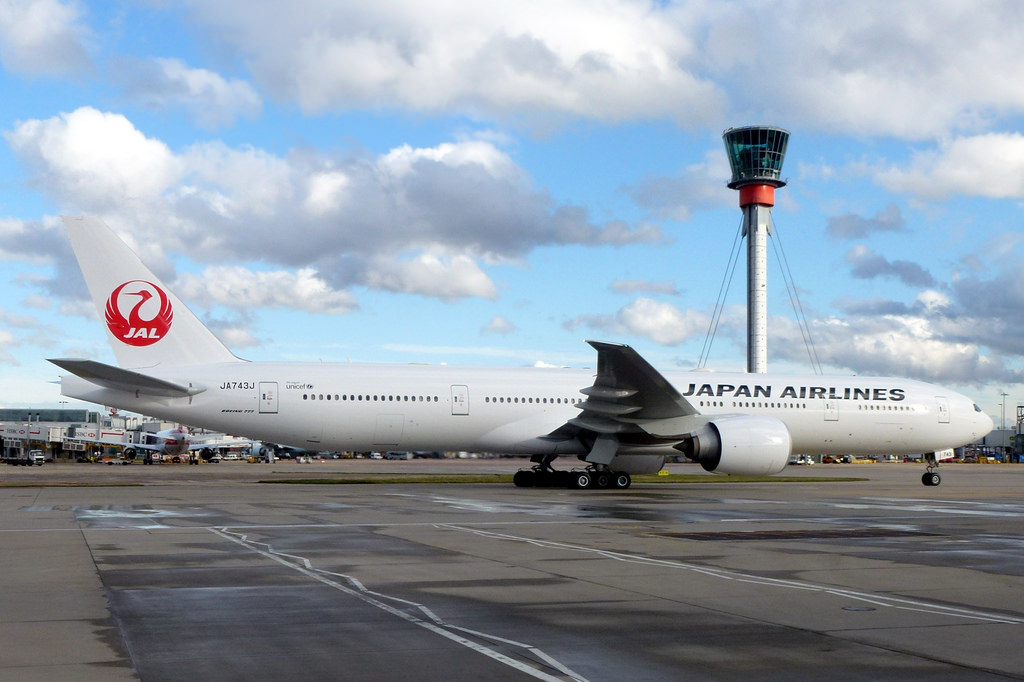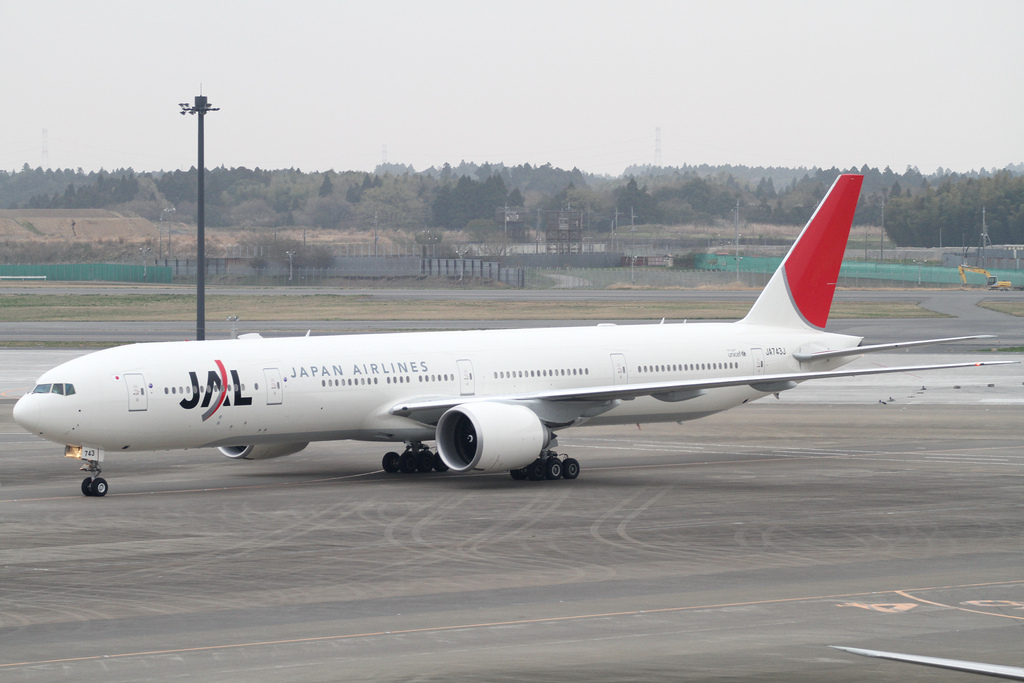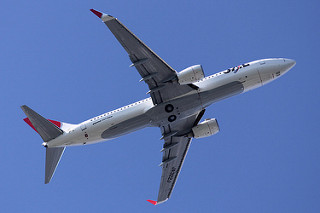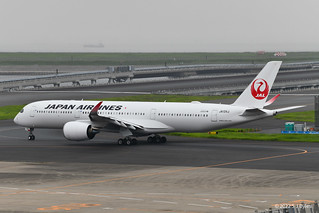JAL B773 at Tokyo on Sep 5th 2017, engine shut down in flight following uncontained failure
Last Update: November 29, 2019 / 17:52:00 GMT/Zulu time
Incident Facts
Date of incident
Sep 5, 2017
Classification
Incident
Airline
JAL Japan Airlines
Flight number
JL-6
Departure
Tokyo Haneda, Japan
Destination
New York JFK, United States
Aircraft Registration
JA743J
Aircraft Type
Boeing 777-300
ICAO Type Designator
B773
Metal debris was found on the departure runway.
A replacement Boeing 777-300 registration JA741J is estimated to reach New York with a delay of 6.5 hours.
The airline initially suspected a bird strike but later reported that no bird remains were found. The cause of the engine failure is under investigation.
Japan's Ministry of Transport reported the grass left of the departure runway caught fire when the engine distributed debris onto the runway. An inspection of the engine did not reveal any bird remains. A number of blades of the low pressure turbine were missing.
On Sep 7th 2017 Japan's TSB rated the accident type as: "Things similar to 'breakage of the engine (only when the debris penetrates the case of the engine)'" effectively describing the engine failure was uncontained. The JTSB have opened an investigation.
On Nov 29th 2019 the JTSB released their final report concluding the probable causes of the serious incident were:
It is highly probable that the serious incident was caused by collisions of some of fragments with turbine rear frame (TRF), which led to generating the hole due to damage to multiple stages of stator vanes and turbine blades of low pressure turbine (LPT) of No. 1 (left side) engine immediately after take-off.
It is highly probable that damage to multiple stages of stator vanes and turbine blades of low pressure turbine was contributed by the fracture of one of LPT fifth stage stator vanes.
It is highly probable that the fracture of one of LPT fifth stage stator vanes was contributed by the crack generated by stress concentration caused by arch-binding, which progressed to the fracture by repetitive stress associated with engine operation.
The JTSB reported immediately after becoming airborne noise was generated by the #1 engine, the engine rpms decreased and a caution message "ENG THRUST L" was displayed on the EICAS. Tower observed flames from behind the engine. The crew proceeded to shut the engine down, declared emergency, dumped fuel and returned to Tokyo for a safe landing. Engine fragments were recovered from the departure runway and its surroundings, a grass area near the departure runway was burned, the grass fire needed to be extinguished by emergency services.
The JTSB analysed the engine damage:
(1) Damage on LPT
(i) It is highly probable that damages on fifth and sixth stage turbine blades which were downstream from LPT fifth stage stator vanes were triggered by fracture of one stator vane of the fifth stage stator vanes segment, then collisions of fragments with fifth stage turbine blades led to further damage, and continuous collisions of those fragments with other sections resulted in the secondary damage.
(ii) Fracture of LPT fifth stage stator vane
It is highly probable that the fractured fifth stage stator vane was impelled to be supported only by the inner side of engine due to the crack which reached from the trailing edge side to the leading edge side caused by repetitive stress associated with operations of engine, followed by another crack generating and progressing on inner side of engine, which finally resulted in fracture, because many striations indicating fatigue fracture were confirmed on the fractured surface of the outer side of engine of LPT fifth stage stator vane segment.
It is probable that the crack of LPT fifth stage stator vane was caused by increased stress on the trailing edge side of LPT fifth stage stator vane caused by arch-binding, because wearing, which was a trace of arch-binding, was confirmed on the slash-face of LPT fifth stage stator vane segment on the inner side of engine and arrest lines were periodically confirmed through fracture analysis.
(2) The Hole of TRF
It is highly probable that the hole of TRF was caused by collisions of fragments generated by the damaged LPT.
It is probable that fragments did not penetrate the hole, because analytical results by NIMS and engine cowl did not show damage.
(3) Flame Outbreak at Engine Aft
It is highly probable that the flame that occurred at the engine aft became incomplete combustion by the change in mixing rate in air flow amount and fuel flow amount after the engine rpm had deviated from normal operating condition due to the damage occurred in LPT, and then, the after fire occurred due to the mixed gas including the fuel was exhausted to the engine aft and was rapidly burned by the supply of oxygen in the atmosphere along with the heat of exhaust duct, because evidence of abnormal combustion inside the engine was not confirmed.
(4) Burned Grass Area along the Side of Runway
It is probable that burned grass area was caused by high temperature fragments exhausted from the engine aft due to damage of LPT and fell on the grass area on the side of runway near the taking off area of the Aircraft.
(5) Safety Actions to Avoid Similar Cases
Inspection conducted by the Operator and the engine manufacturer after the serious incident confirmed that cracks and wearing caused by arch-binding occurred in multiple segments of LPT fifth stage stator vanes.
In the serious incident, there occurred the ground damage of burning grass area caused by many fragments of damaged multiple stages of LPT stator vanes and turbine blades, which fell on runway and its surroundings. From this, it is probable that taking safety actions as described below is meaningful to prevent similar engine failure cases and falling objects on the ground in the future:
(i) Widening space between adjacent segments of LPT fifth stage stator vanes Cracks and wearing caused by arch-binding were confirmed to have occurred on multiple segments of LPT fifth stage stator vanes since the serious incident.
It is probable that widening space between adjacent segments of LPT fifth stage stator vanes, which has not changed design in accordance with the service bulletin (SB72-0637), reduces stress increase to the outer side of engine of LPT fifth stage stator vanes caused by arch-binding and contributes to prevent occurrence of cracks in fifth stage stator vanes. It is probably meaningful to widen space between adjacent segments by use of LPT fifth stage stator vanes in accordance with the service bulletin (SB72-0637) or by modification of segments to which the service bulletin (SB72-0637) has not been applied in order to avoid recurrence of similar cases.
(ii) Inspection of LPT fifth stage stator vanes segments
It is probable that BSI is effective for early detection of similar engine failure, because the cracks were confirmed on LPT fifth stage stator vanes of multiple engines by one time BSI on each engine at the engine maintenance facility after the serious incident, and furthermore, the cracks were confirmed on LPT fifth stage stator vanes of multiple engines by the BSI which the Operator has been conducting every 250 flight cycles on the same type engines under operation. Accordingly, it is desirable that the engine manufacturer notify the users of the same type engine of the method of BSI and an appropriate interval to repeat BSI for the segments of LPT fifth stage stator vanes, which have not taken countermeasure to widen space between adjacent segments of LPT fifth stage stator vanes on engines under operation by service bulletin (SB).
Climb out and landing back (Video: BBJN 2014)
Incident Facts
Date of incident
Sep 5, 2017
Classification
Incident
Airline
JAL Japan Airlines
Flight number
JL-6
Departure
Tokyo Haneda, Japan
Destination
New York JFK, United States
Aircraft Registration
JA743J
Aircraft Type
Boeing 777-300
ICAO Type Designator
B773
This article is published under license from Avherald.com. © of text by Avherald.com.
Article source
You can read 2 more free articles without a subscription.
Subscribe now and continue reading without any limits!
Read unlimited articles and receive our daily update briefing. Gain better insights into what is happening in commercial aviation safety.
Send tip
Support AeroInside by sending a small tip amount.
Related articles
JAL A359 near Sapporo on Sep 4th 2025, engine shut down in flight
A JAL Japan Airlines Airbus A350-900, registration JA07XJ performing flight JL-500 from Sapporo Chitose to Tokyo Haneda (Japan) with 285 people on…
JAL B789 near Seoul on Sep 4th 2024, turbulence injures flight attendant
A JAL Japan Airlines Boeing 787-9, registration JA863J performing flight JL-22 from Beijing (China) to Tokyo Haneda (Japan) with 121 passengers and…
JAL B738 at Tokyo on Apr 7th 2025, lined up with edge line for takeoff
A JAL Japan Airlines Boeing 737-800, registration JA322J performing flight JL-377 from Tokyo Haneda to Kitakyushu (Japan) with 80 people on board,…
JAL A359 at Tokyo on Jan 2nd 2024, collided with Coast Guard DH8C on runway and burst into flames
A JAL Japan Airlines Airbus A350-900, registration JA13XJ performing flight JL-516 from Sapporo to Tokyo Haneda (Japan) with 367 passengers and 12…
JAL B738 at Kagoshima on Nov 30th 2024, tyre damage on landing
A JAL Japan Airlines Boeing 737-800, registration JA336J performing flight JL-647 from Tokyo Haneda to Kagoshima (Japan) with 150 people on board,…
Newest articles
United B764 near Boston on Oct 15th 2025, laptop hides away
A United Boeing 767-400, registration N76054 performing flight UA-126 from Washington Dulles,DC (USA) to Rome Fiumicino (Italy) with 216 people on…
Southwest B737 at Panama City on Jun 14th 2025, turbulence injures passenger
A Southwest Airlines Boeing 737-700, registration N969WN performing flight WN-3508 from Dallas Love,TX to Panama City,FL (USA) with 142 passengers…
Subscribe today
Are you researching aviation incidents? Get access to AeroInside Insights, unlimited read access and receive the daily newsletter.
Pick your plan and subscribePartner

ELITE Simulation Solutions is a leading global provider of Flight Simulation Training Devices, IFR training software as well as flight controls and related services. Find out more.
SafetyScan Pro provides streamlined access to thousands of aviation accident reports. Tailored for your safety management efforts. Book your demo today
AeroInside Blog
Popular aircraft
Airbus A320Boeing 737-800
Boeing 737-800 MAX
Popular airlines
American AirlinesUnited
Delta
Air Canada
Lufthansa
British Airways









